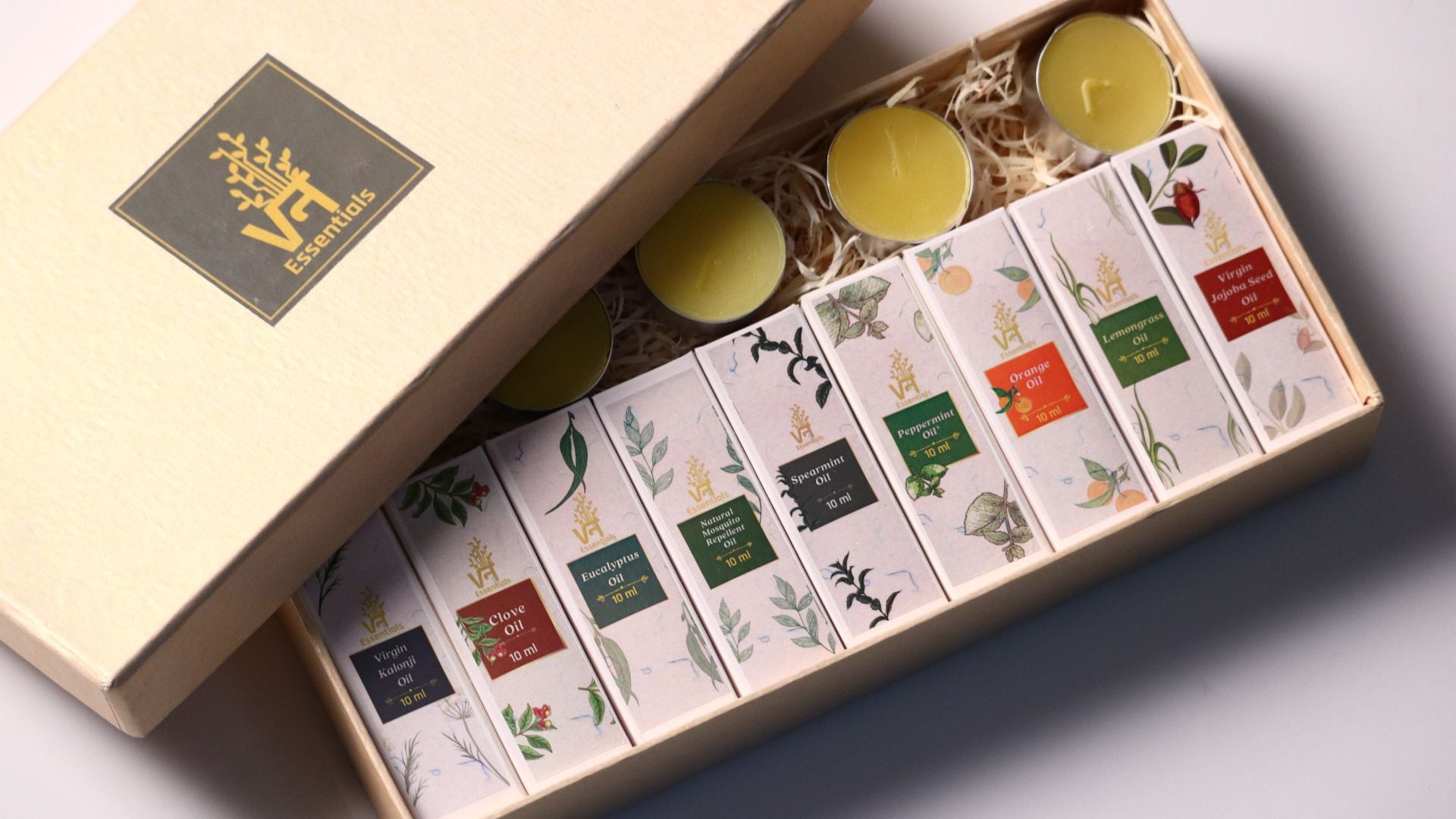Cart
0
If you are someone who follows our socials, you must be an expert in essential oils by now. But there is always room for more knowledge, isn’t there? So how about we discuss more essential oils today? In this blog, we will learn from what plant parts are essential oils extracted, and what are the benefits of those oils. Sounds good? Well, then let’s dive right into it!
-
LEAVES - Several essential oils are extracted from the leaves of plants. Tea Tree Oil, Cinnamon Leaf Oil, and Eucalyptus Oil are good examples.
- Tea Tree Oil - Tea Tree Oil is extracted from the leaves of Melaleuca alternifolia, a tree native to Queensland and New South Wales, Australia. It has been in use for centuries, thanks to its healing and calming properties. It has compounds such as terpinen-4-ol, which make Tea Tree Oil antimicrobial and antiseptic. It has a cooling aroma, which calms down anxious nerves, to give your mind a relaxed sensation, away from everyday stress and worry.
- Cinnamon Leaf Oil - Popular in Indian cuisines for its enticing aroma, almost all of us are familiar with the cinnamon barks we usually find in our kitchens. From the same plant of Cinnamomum is derived the Cinnamon Leaf Oil, via the steam distillation of leaves. Earlier used quite exclusively in the flavoring industry, recent years have witnessed the therapeutic and health benefits of the oil.
-
Eucalyptus Oil - Possibly one of the most popular ingredients in Indian Ayurveda, Eucalyptus Oil works for colds, sinus, migraine, and coughs. Using Eucalyptus Essential Oil for sleep is also a good remedy for insomnia. It even works as a bug repellant, and antiseptic, for aromatherapy, and for treating irregular sleep patterns.
-
FLOWERING HERBS - In this, both flowers and leaves are distilled to get to desired essential oil. Lavender, Peppermint, and Spearmint Essential Oils are good examples.
- Lavender Essential Oil - Popular as Lavandula angustifolia in the scientific community, Lavender is a herb that is native to the mountainous regions of the Mediterranean. Extracted via steam stripping the plant, Lavender Essential Oil is anti-inflammatory, antifungal, antidepressant, antiseptic, antibacterial, antispasmodic, analgesic, detoxifying, and sedative. With its purple flowers that proliferate beautifully in fields, lavender is as much of a vision to behold as it is a plant that has so marvelously aided the healthcare and beauty industry.
- Peppermint Oil - A hybrid of spearmint and watermint, peppermint has been in use for hundreds and hundreds of years. Its refreshing smell, healing properties, and hygiene benefits make it one of the most popular ingredients used in personal care products. Extracted from the same plant of peppermint, peppermint essential oil provides you with the same benefits, with more effectiveness and concentration.
-
Spearmint Oil - The oldest in the family of the mint plant, Spearmint gets its name from its spear-shaped leaves. It has been around since the old ages, thanks to its remedial properties. Extracted from the spearmint plant is the Spearmint Essential Oil. It has a gentle smell, helps keep your gut healthy, and eases anxiety & tension, among several other benefits.
-
Petals or flowers - Rose Essential Oil and Clove Oil are some essential oils extracted this way.
- Rose Essential Oil - One of the most prominent symbols of love, the Rose is loved by all. Its enchanting aroma and beautiful corolla make it the perfect gift for anyone we adore and love. But do you know the rose is of equal merit in the healthcare department as it is in its aesthetics? Extracted from the rose plant, Rose Essential Oil offers a wide range of benefits that can prove to be superbly beneficial in our day-to-day lifestyle.
- Clove Oil - Clove or laung has been a home-known ingredient for centuries. It is antimicrobial, antifungal, and antiviral, and its pleasant aroma is known to have healing properties as well. Extracted from the leaves, barks, stems, and flowers of the clove plant is the Clove Oil. It offers the same benefits as cloves, just with more effectiveness.



